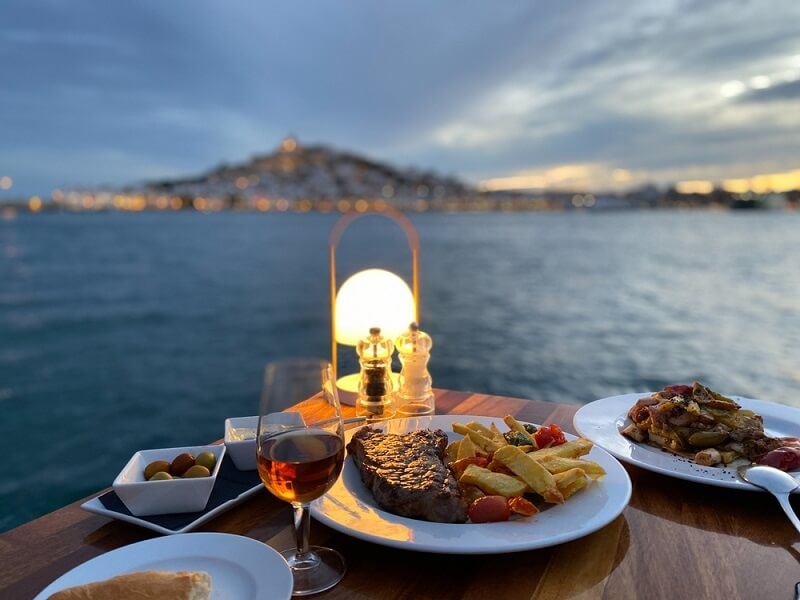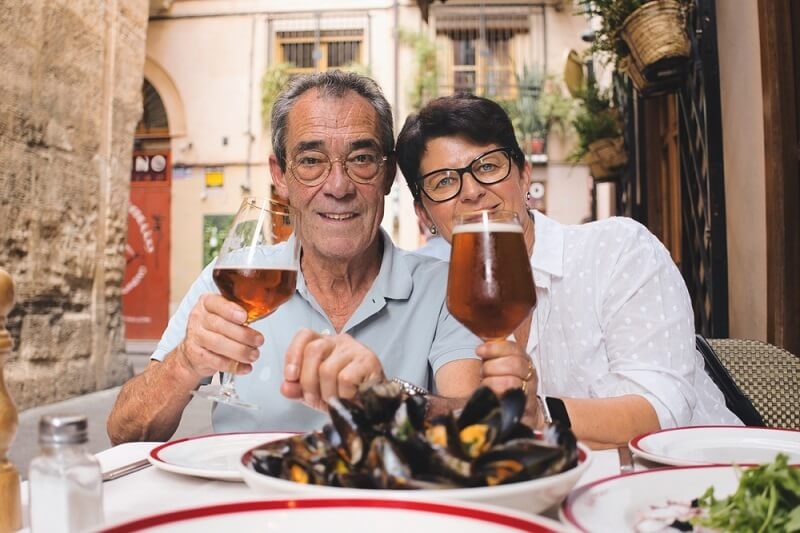
When Americans think of Spanish culture, flamenco, siestas, and paella are the first things that come to mind. But one of the most fascinating aspects of living in Spain—and one that will come as a shock to many visitors—is the way meals are planned and consumed. Spanish cuisine is not just something to put in your stomach; it's a ceremony, social activity, and cultural institution. To experience the true Spain, you have to understand the way people dine in Spain.
Lunches here aren't a matter of wolfing something down and getting back to your day. They're about tradition, connection, and bonding. Let's explore why meals are a social event in Spain, what sobremesa is defined as, all about dining customs in Spain, why dinner is late in Spain, and the dynamics of Spanish lunch vs dinner compared to what Americans are used to.
In America, food gets squeezed in between work calls, school pickup, and errands. One eats while watching TV or has a sandwich on the run. But not in Spain. Food is sacred time. Meals are slow and intentional, and they're shared.
One of the main reasons meals become social in Spain is the rhythm of the day. Spanish cultural meal times are surprisingly dissimilar from American norms. Lunch is the largest meal, sometimes over a number of courses, and dinner is much later in the evening than you'd be accustomed to. Organization of these meal times allows family, friends, and co-workers to linger, exchange tales, and just enjoy each other's company.

Spanish lunch and dinner differ quite a bit. La comida is the main meal of the day, and they typically eat this between 2:00 and 4:00 p.m. It is made up of multiple courses: an appetizer like soup or salad, a main course (usually meat or fish), and a dessert or fruit, culminating in coffee. It's substantial and filling because Spanish people won't have dinner until much later.
Dinner (la cena), however, is lighter. It could consist of tapas, tortilla española (Spanish omelet), grilled vegetables, or a plain salad. The lighter meal makes sense, given how late it is. Understanding Spanish lunch vs dinner is important to tourists because it affects everything from restaurant opening and closing hours to family routines.
In fact, most American tourists are surprised to show up at what they'd consider to be prime dinner time, e.g., 6:00 or 7:00 p.m., and find restaurants shut. That's still snack time in Spain!
So, why dinner is late in Spain? This is something that confuses Americans. The answer lies in a mix of history, climate, and lifestyle.
Historic Time Zone Modification: World War II was the time Spain moved its clocks forward to align with Nazi Germany's, when geographically it would be the same time as Portugal and England. Later sunsets, as a result, meant meal times moved later as well.
Climate: Afternoon in large parts of Spain, especially the south, is stiflingly hot. It is reasonable to eat a substantial meal during the day (followed by a break or siesta) and eat light at night once the day has warmed up.
Lifestyle: Spaniards work later in the evening, with longer afternoon siestas. By the time business and social activities wind down, dinner comes naturally at 9:00 to 10:00 p.m.—and later on weekends, as well.
That explains why dinner is late in Spain, but what it really indicates is the manner in which times of eating are reflective of cultural values. Food is not wolfed down; it is savored.
If you really want to learn why food is a social affair in Spain, you have to be acquainted with sobremesa. So, here's sobremesa explained.
Literally, sobremesa is "over the table." It is the practice of sitting around after meals, conversing, drinking coffee, or even tasting a small liqueur. It's the leisurely moment when conversation flows, and nobody is rushing to leave.
Americans may be taken aback that a two-hour lunch swells into a four-hour exercise, but that is the norm in Spain. Sobremesa reminds us that meals are not solely about grub, but also about human connection. Families can discuss their day, friends can debate politics, or co-workers can bond in an environment other than the office. The table is a communal space for laughter and connection.
For most Spaniards, the best part of the meal isn't the food but the discussions that follow.
Si vous arrivez en Espagne, il est également nécessaire de connaître l'étiquette de la cuisine en Espagne. Bien que la société soit chaleureuse et accueillante, il existe certaines habitudes déterminantes:
Punctuality is flexible: Don't expect the people to show up a little later than planned for a dinner reservation. Socializing is not formal, and timing is not as formal as in the U.S.
Sharing food: Tapas culture is about sharing. It's common to order a number of small dishes for the table rather than individual entrées.
Eating Utensils: While there is no rule against eating informal tapas with the hands, official meals must generally be eaten with utensils, and both hands will typically remain above the table by Spaniards.
Toasting: The Spanish love to toast. A common phrase is "¡Salud!" (to your health). Always look at someone while toasting—it's considered polite.
Tipping: Unlike in the United States, tipping is not obligatory at the same level. Leaving a little change or rounding off the bill is normal.
Understanding table manners in Spain will enable you to navigate social life with ease and dignity.
To really get it, consider cultural meal times in Spain vs. the U.S.:
Breakfast (Desayuno): In the U.S., breakfast is eggs, bacon, or pancakes. In Spain, it's more of a light food—coffee with milk and pastry or toast.
Mid-Morning Snack (Almuerzo): Spaniards eat a light snack, e.g., a sandwich or fruit, at 11:00 a.m.
Lunch (La Comida): The principal meal of the day, eaten between 2:00 and 4:00 p.m.
Afternoon Snack (Merienda): Between 5:00 and 6:00 p.m., children and adults can eat a snack, most likely a sandwich or pastry.
Dinner (La Cena): And finally, a light meal between 9:00 and 10:30 p.m.
These Spanish cultural mealtimes reveal a tempo founded in social connection and slowness. Meals punctuate the day and offer time to gather, as compared to America, where dining is accommodated around school and work schedules.
So, back to the big question: why are meals such a social activity in Spain? The answer lies in the interaction of all these customs:
The late dinner why in Spain tempo is a special rhythm of a life that prefers food, family, and conversation above getting through the day.
Here are some things that Americans can learn from them:
Slow Down: Meals are not something that should be rushed. Enjoy the food and company.
Make Meals Social: Serving dishes family-style and staying at the table longer makes for tighter relationships.
Respect the Schedule: Adjust your expectations for meal times. Remember that the reason dinner is late in Spain has deep cultural roots.
Embrace Sobremesa: The joy of conversation after a meal might be as nourishing as the meal itself.
Observe Etiquette: By following dining etiquette in Spain, you’ll blend in and show respect for local traditions.
Travel is also about transcending your routine and looking at life differently from how it is in a different culture. Coming in contact with Spain's food culture teaches Americans a valuable lesson about slowing down and creating space for what truly matters: people.
Dining customs in Spain have less to do with what one is eating and more to do with whom one is eating. From the Spanish lunch vs dinner mentality, the pleasures of sobremesa, to why Spanish dinner is late, the Spanish way of food shows us that eating should be shared and enjoyed with others.
So the next time you are in Spain—or even at your own dinner table—follow the example of Spanish life. Stay longer, toast more warmly, and partake in the simple yet profound ritual of breaking bread.
This content was created by AI